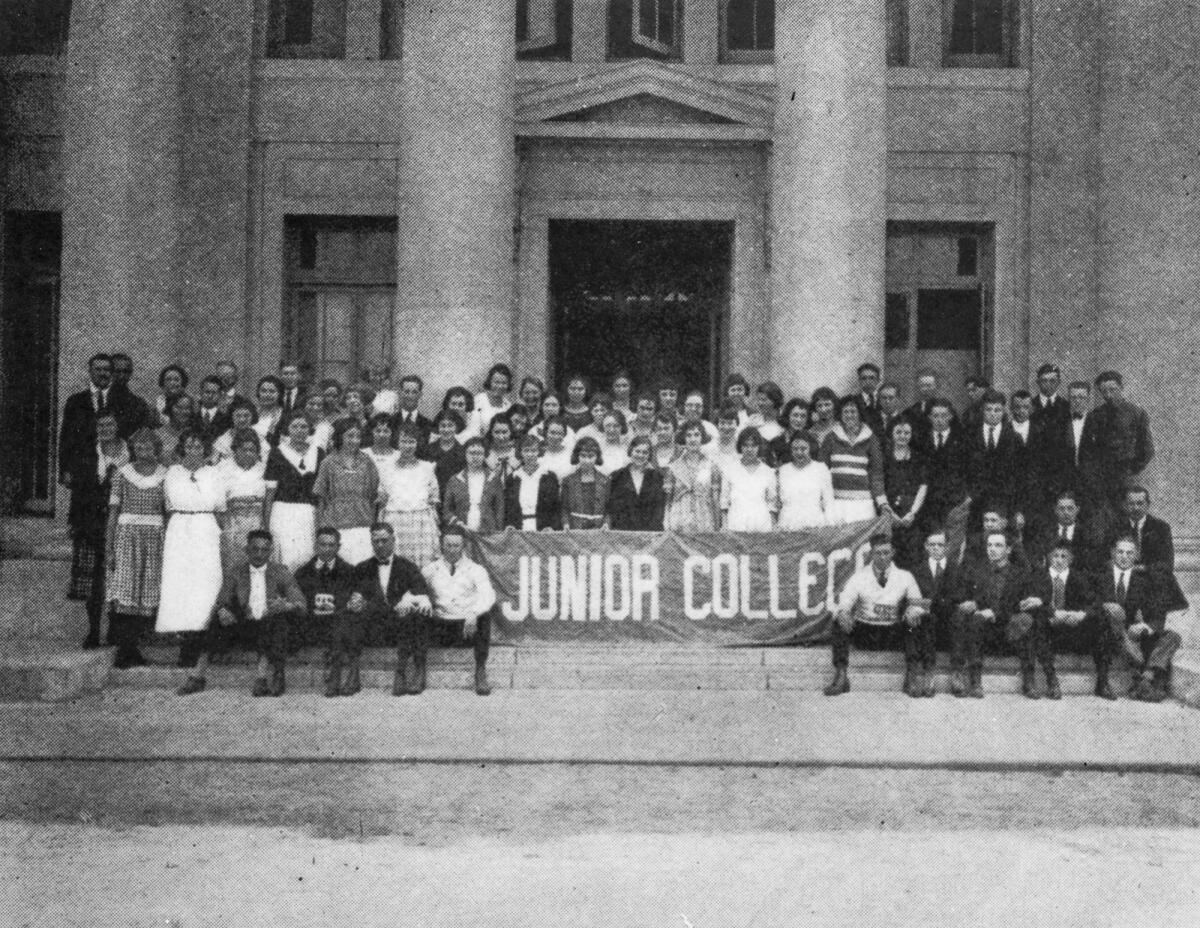Santa Ana College marks 100 years

This weekend, Santa Ana College, one of the oldest educational institutions in Orange County and one of the longest-running places of higher learning in California, is marking its centennial.
“It’s really special for us,” said Erlinda Martinez, president of Santa Ana College. “Not everybody gets to turn 100.”
To celebrate, the college planned to host a 100th birthday party on Saturday, featuring live multicultural musical and dance performances, gourmet food trucks, a wine and beer garden, a vintage car show and fireworks.
The college, then known as Santa Ana Junior College, opened in 1915 as a division of Santa Ana High School, according to Judy Iannaccone, director of public affairs and publications for the Rancho Santiago Community College District, making it the second college in Orange County and among the earliest community colleges in the state.
Santa Ana College is the second-oldest college in Orange County after Fullerton College, which opened two years earlier. UC Irvine, by contrast, is about to turn 50 years old.
While Santa Ana College started off with just 29 students and 11 faculty members in 1915, it has since then evolved into an important educational center in the county, serving more than 30,000 students last fall.
“A community college that’s been here this long can give you a long roster of professional alumni in the area,” said Martinez. “It’s part of the workforce development for all of Orange County.”
Many Santa Ana College graduates, she explained, have gone on to become teachers, nurses, attorneys and accountants in the area, and the college has active partnerships with the Orange County Sheriff’s Department, fire agences and several hospitals to provide job training.
One of the primary goals for Santa Ana College — what Martinez called its “informal mission statement” — has been “a college degree in every home” in Santa Ana, where 60% of residents over the age of 25 do not have a high school degree.
“We look at every student that’s possibly the first in their family to get a degree,” she said. “That first in the family changes the trajectory of that family and has a ripple effect for the next generation.”
To do this, the college teamed up with local high schools, universities and community groups to form the Santa Ana Partnership, which aims to increase access to higher education in the city. For its part, Santa Ana College has reached deeply into the community, trying to find ways to attract a diverse student body and to make education as accessible and affordable as possible.
“We’re looking at every barrier that we can to help our diverse students get through,” said Martinez. “We don’t want them to have to take out loans. We don’t want them to have to sacrifice so much to be able to get to the university.”
Last year, 66% of students at Santa Ana College were Latino, and 11% were Asian, according to Iannaccone.
In 2009, the college was ranked among the top 10 producers of associate degrees for Hispanic students in the country and the top 25 for Asian Americans. The college has also provided English language courses and legal services to meet the needs of various immigrant and refugee communities in the city.
While Martinez is proud of the college’s achievements, it’s the future that excites her most.
Starting in the 2017-18 academic year, Santa Ana College will offer a bachelor of science degree in occupational studies as part of the statewide pilot program that authorized a dozen community colleges to offer baccalaureate degrees in selected fields.
“My hope is that this will be an opportunity for us to demonstrate that we are capable of doing a four-year degree and that we’ll do more,” said Martinez. “There are lots of areas that we just don’t have enough throughput to the bachelor’s degree to meet the needs that we have in the state. Community colleges are a good way to expand that throughput and provide that trained workforce.”
And in honor of the centennial, the Santa Ana College Foundation is working to establish “100 for 100,” which will provide endowed scholarships of $1,000 to 100 students each year in perpetuity.
Said Martinez: “We’re committed to that diverse population, which comes with diverse needs educationally and also financially.”
“The foundation could have bought us something — that’s what other people do,” Martinez added. “And maybe that’s what makes Santa Ana College such a standout. Our focus is on the students.”